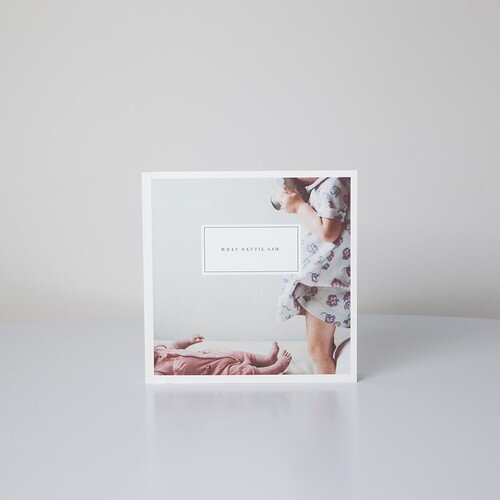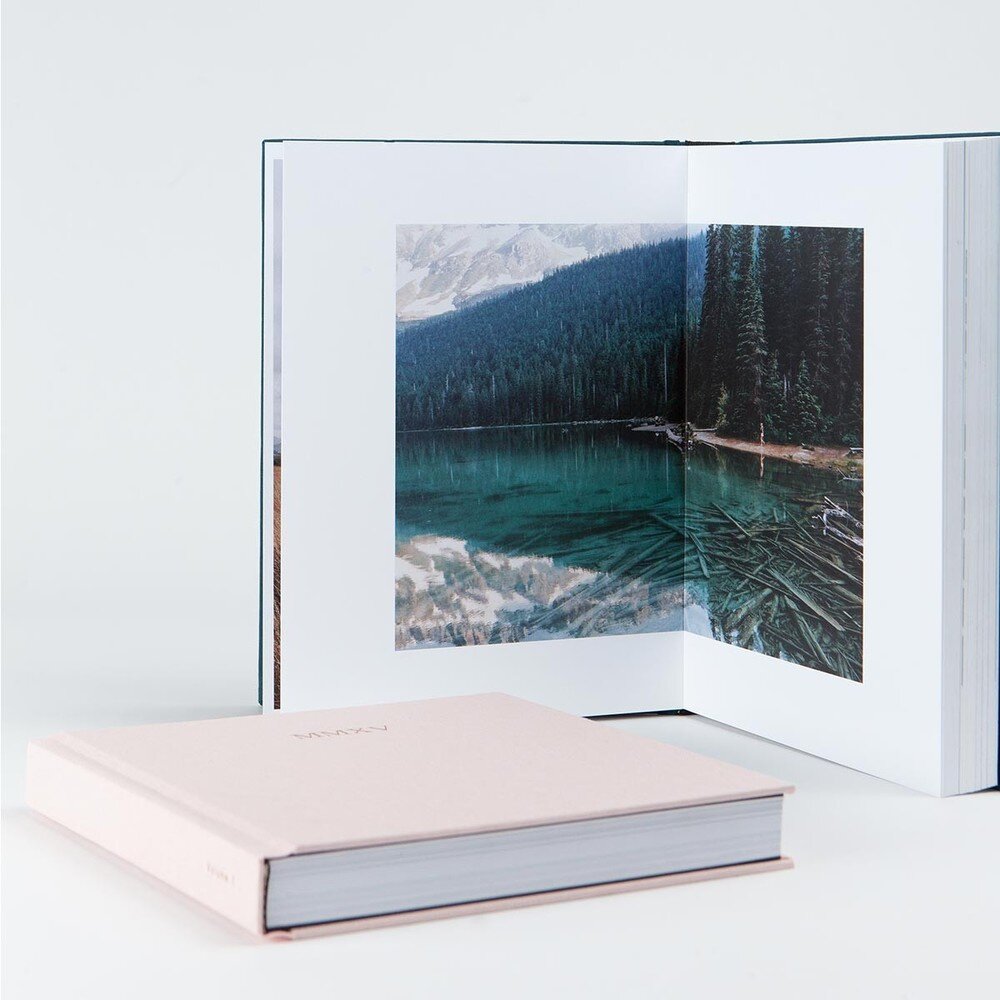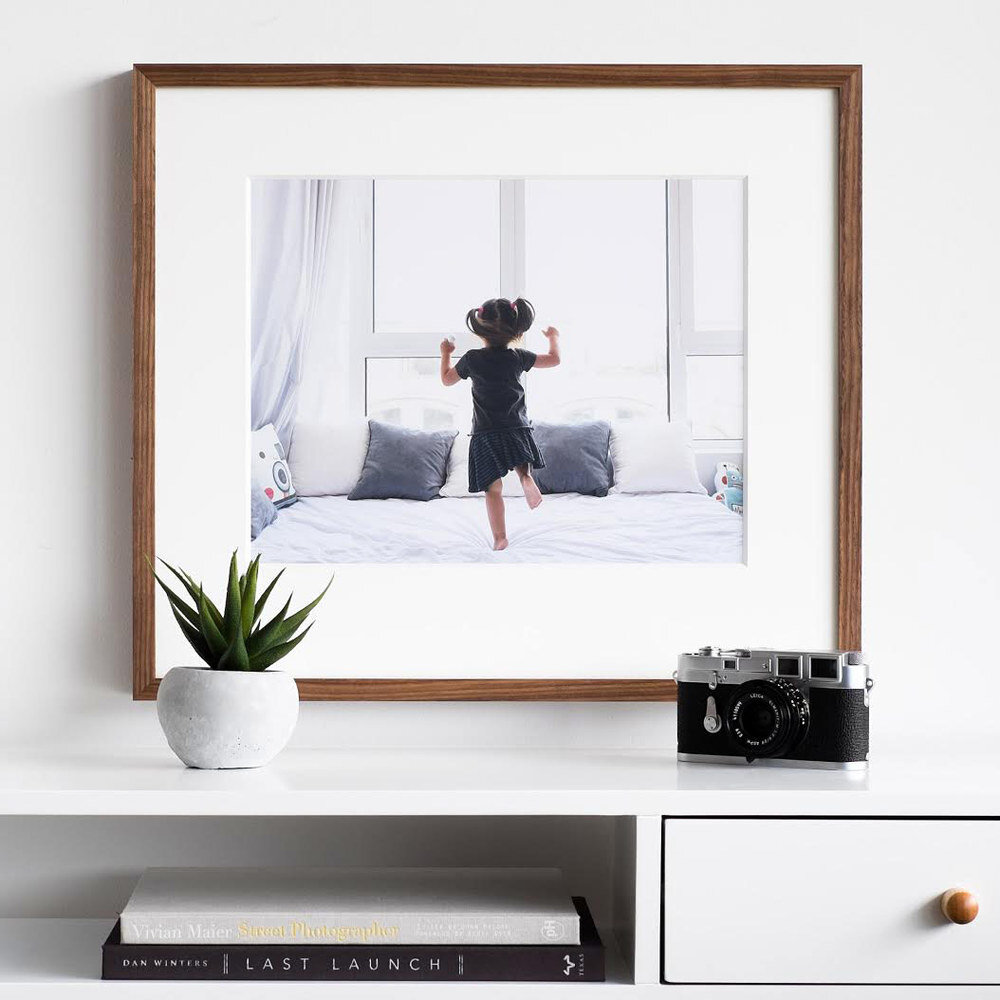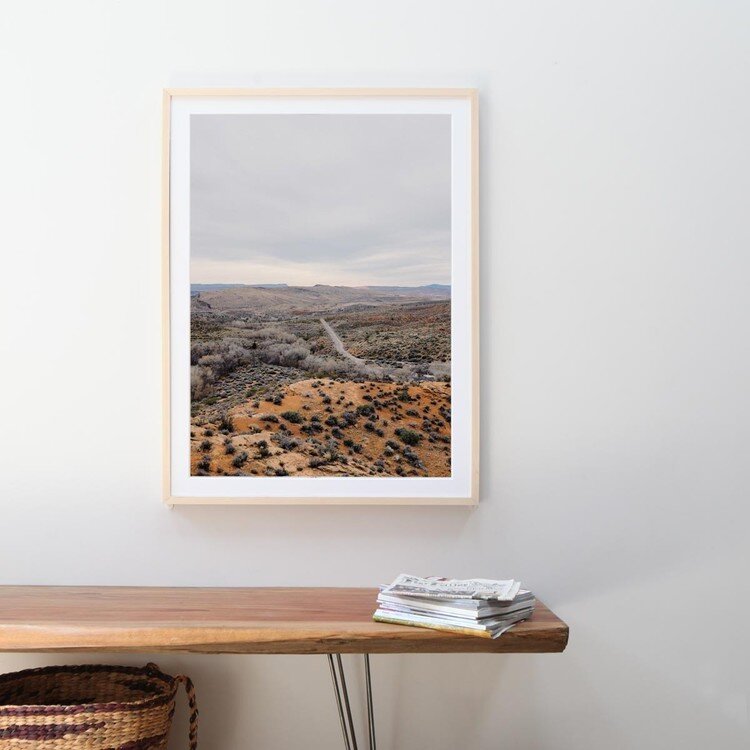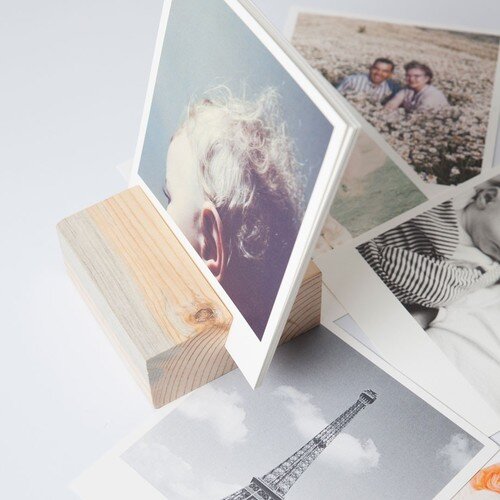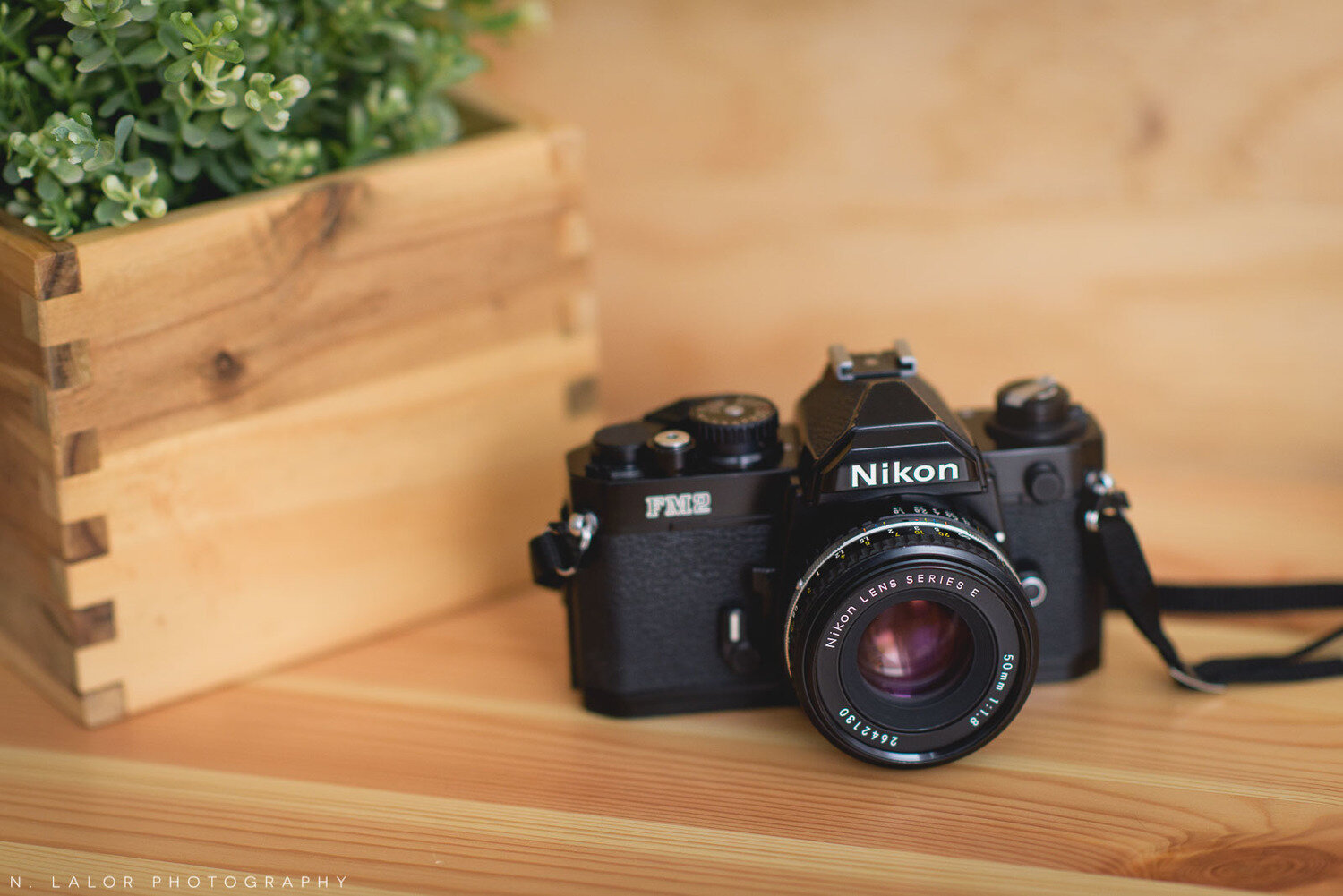5 KonMari-inspired ideas for displaying photographs at home
Christmas 2014, my well-meaning husband gifted me a copy of Marie Kondo's The Life-Changing Magic of Tidying Up. The book spoke directly to my practical mindset and filled me with a desire to get rid of absolutely everything that wasn't loved or essential. About 6 months later (no thanks to a full-time corporate job and 2 children), I finally had my pared down household with approximately 65% less STUFF than before.
Which brings me to some of the most precious items we have to go through during a full-on-tidying of the home.. photographs.
I certainly had too many photos. Lots that we got from daycare. Plenty that I've printed over the years. I didn't need so many, and I wasn't enjoying them in that state of clutter anyway. So I sought better ways of displaying, storing, and keeping photographs in my home.. ways that fit into Marie Kondo's philosophy of keeping a home tidy and beautiful.
Marie Kondo advises making an album of all the precious photographs for yourself, or for a family member, to enjoy.. but I went a step beyond that since scrapbooking isn't really my style. (I also have commitment issues, but that's another story.)So I put together 5 of my favorite way to store and display photographs that are both stylish, pretty to behold, and tidy.. because.. well... because it's important.
“... having come this far, I can no longer buy something just to make do. Instead, I consider the design, the feel, the convenience, and every other factor important to me extremely carefully until I find one that I really love. And that means that the one I choose is the very best, something that I will cherish all my life.”
— Marie Kondo
1. Yearly Family Photo Books or Albums
There is a definite advantage to making a printed family book of images every year.. or decade (up to you!). Photo books are typically more compact than slide-in photo albums, and usually a lot more beautiful to behold. You can have a neatly organized shelf full of these "Family Yearbooks" and it will look gorgeous, and neat.
A book that contains a full year's (or several years) worth of images is a lot more meaningful that individual albums people often purchase from photographers.. it tells the full story. Don't get me wrong, those gorgeous professional photo albums are totally drool-worthy, but if you're trying to cut back on stuff in your home, it makes a lot more sense to consolidate everything into one book. Just be sure to get the digital images or extra copies your professional photos so you can include them in your family's yearbook/album.
Taking the time to put one of these books together is tough, and it's a lot of effort.. but I think it's worth it if you're the type of person that really enjoys this way of looking at images. There are so many options out there, but I really found that Artifact Uprising does the best job is terms of printing quality and ease of use.. and they have options for just about every budget. Win, win!
2. LARGE FRAMED PRINTS
A collection of small frames can look stunning, but it can also look cluttered (and sometimes askew). Large, oversized, impactful images on the wall can add a personal touch to your interiors and look tidy. It's also less stuff to clean.
With frames, quality matters. If you want the ability to change the print down the line (meaning the frame is more of a long-term investment), be sure to select an option that allows you to do that. Solid wood frames are best, of course. An 8-ply mat and quality printing is a must for an upscale look. And plexiglass is better to have around kids than the traditional glass option.
But it's hard finding a really amazing vendor for frames. So, I was absolutely thrilled, after years of searching, to stumble upon Saw & Mitre. Their frames are priced to match the quality and the craftsmanship, and there is no way I'm getting a frame from anywhere else.. but there are other, cheaper, options out there, too.
3. A MEMORY BOX
I have one of these for each of my children. Throughout the year, I print a few meaningful photos and place them in their special memory box for safe storage. When the kids grow up, they will have a perfectly curated collection of images from their childhood all ready to go.
This method is perfect for me because I don't have to commit to an album's worth of images, the boxes can be stored in a drawer or displayed on a shelf, and I can also include special keepsakes like ticket stubs and small drawings. It's the perfect KonMari approach for storing precious printed photographs without taking up too much space or causing unnecessary clutter.
You can use anything as a keepsake box, find some wonderful handmade wood options on Etsy, or invest in one when you work with a professional photographer. Just make sure the box won't damage the photo paper during storage, and you're set.
The handmade linen presentation box I offer to my photography clients as part of the Luxury Collections.
4. A Photo Display Stand
A photo stand with numerous photographs has so many advantages over the traditional arrangement of tabletop frames. There is less dusting and cleaning involved (can you tell that I really hate dusting?). You can swap photographs for a fresh new look anytime you wish. Everything is tidy and in one designated spot.. not to mention that these look very stylish. It's also really fun for kids to sort through the photos (although my toddler likes it a bit too much, if you know what I mean) and you can easily refresh the images by ordering additional prints.
I have one of these wood stands from Artifact Uprising, but I also include a custom-made walnut stand with all of my Collections. I think it's important to have a way to easily display images without the need to invest in (or clean) frames, and really nothing beats the joy of seeing a new photograph in a familiar spot, am I right?
5. Online
While I'm sure any photographer you ask will insist that nothing beats a printed image, but maybe you just don't want that much paper around. Maybe you have hundreds of photos you'd like to keep, just not all at once, and in your home. You can, in fact, keep your photos safe and sound online, if you follow a few simple guidelines.
First of all, the primary place you keep your photos should be easy to organize, live in the cloud (or a personal server that is accessible online), and not degrade the quality of your images (sorry, Facebook). I personally love, and use, flickr. I keep most of my images private and share them only with family, who can download and print photos of their grandchildren all they like without bugging me. I can access my photos from anywhere and download a full-resolution copy whenever I want. I do keep them organized and neat and don't post any that aren't worth keep to begin with. If you have a hard-drive full of repeat, blurry, or unflattering photos, you'll need to go through them first and select only the ones you'd like to keep (and yes, delete the rest).
But you also need a backup. Because digital media is transitory, prone to corruption, and can become obsolete within a few years. External hard drives, a second online backup, and keeping a copy on your computer, are all good options. You just can't rely on one place to keep your digital images safe and sound for more than 5 years (or even 5 minutes in some cases).
The ideal, of course, is to print and display your favorite photos, keeping the rest digital (safely). It's important to enjoy images in the truly best form of printed photographs, whether they're hanging on the wall, displayed on your desk, or printed in a book. Like Marie Kondo's methodology, you need to hold these precious objects in your hand so you can feel the bond that connects us to our memories.. and, it's a lot easier on the eyes than starring at a screen, too.
I hope your found this post useful and fun.. if you have a favorite way of displaying or storing your photos, please don't hesitate to leave a comment and let me know!

